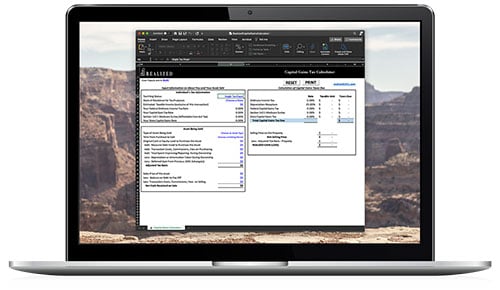
Selling a business that has substantial real estate holdings offers you the opportunity to consider strategies for satisfying your risk tolerance and diversification preferences, as well as managing tax implications. The first decision to make is whether you want to retain the real estate or sell it as part of the business deal. A third option is a third-party sale and leaseback to the business buyer, but that isn’t germane to this discussion. You will need to weigh several factors in making this decision, including:
- the preference of the buyer or potential buyer
- the current and projected market conditions
- your own investment horizon, diversification needs, and target risk profile, and
- your ability to obtain favorable financing terms, if you decide to retain the property asset while selling the business.
Your preference for liquidity versus income could outweigh the other factors, but tax consequences are significant. Selling the real estate simultaneously with the balance of the business assets enables you to acquire the cash from the sale and pay capital gains tax at 20% on the real estate, along with most of the other business holdings. Note that the “capital gain” is calculated as the increase in value from the basis, which is the amount of your investment in the property. IRS Publication 951 explains the cost basis, adjusted basis, and references important modifiers such as depreciation, amortization, depletion, and casualty losses. Some of the company assets cannot be treated as capital, and the proceeds on those are subject to tax liability as ordinary income. It is important to be aware that if you have held the real estate less than 12 months, it is a short-term capital gain, and will be taxed at the higher ordinary income rate.
However, if you decide to retain the real estate, and sell the business itself (inventory, equipment, office furniture, customer goodwill and other non-tangibles) only, then you will start receiving rental income from the new buyer for the lease of the real estate the business occupies. Rental income is ordinary income, and taxed at the higher personal income rates, depending on overall income, but currently up to 37%.
You can defer a portion of the capital gains tax if you do not receive the entire sales proceeds in the year that you consummate the sale. Only capital assets (including real estate) are eligible for reporting with the installment method of tax payment. IRS Publication 537 provides details on installment sales.
One thing to remember if the business you are selling is a C corporation, and the real estate assets are held within the corporate structure, you will benefit from selling the stock to the buyer, rather than selling the corporate assets to them. If you sell the assets the corporation will pay taxes on the gains from the sale, and then any shareholders will also pay capital gains when you sell your stock. If a buyer pushes for an asset purchase rather than a stock acquisition, be careful to structure the price to reflect the buyer’s advantage from a tax perspective.
Also, consider the tax deferral strategies available with a 1031 exchange or a 721 REIT acquisition. With a 1031 exchange, you can defer the capital gains taxes on the sale of your real estate by exchanging the proceeds from the sale (through a qualified intermediary) into like-kind property of equal or greater value, per IRC 1031. In a Section 721 UPREIT exchange, the deferral benefits are similar, but the real property is exchanged for shares in the REIT.


